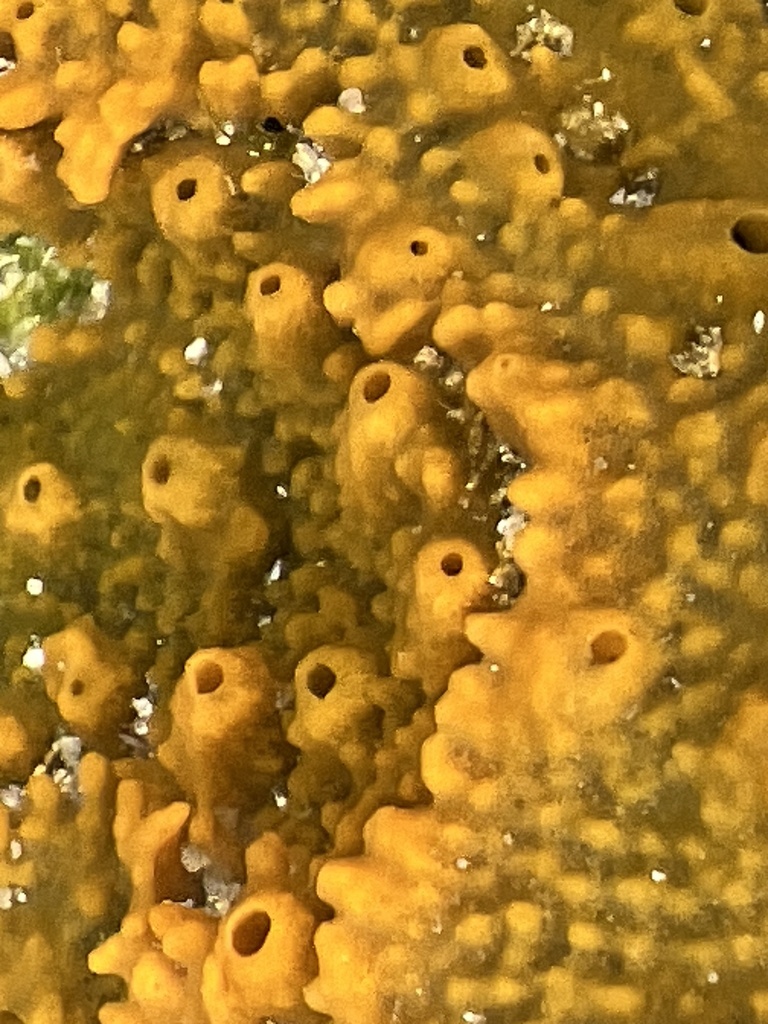
Hymeniacidon perlevis, known as the 'Crumb of Bread Sponge' in England, is variable in form and color, depending on habitat. It was described from Wales by Montagu in 1814, but is now widely distributed around the world. It is known by at least 17 heterotypic synonyms. Colonies vary from thin sheets to thick incrustations and colonies with finger-like processes especially in less exposed or subtidal zones, Colonies reach 60 mm to 300 mm Projections vary from small papillae to long (~50 mm) finger-like projections. The texture of the colony is soft and fleshy. The endoskeleton is a confused mass of random needle-like stylus-like spicules. The spicules are needle or stylus-like, 189-300 µm long. The color varies from yellow to brown, to brick-orange or blood red, often darker in intertidal locations. In southern California, this sponge was collected in 1914 and described as H. sinapium (de Laubenfels 1930). Conspicuous reef formations were noted in Elkhorn Slough, California. In the Eastern Pacific, this sponge as also been found in Ladysmith Harbour. Morphological studies and recent genetic studies have identified many locally named sponge species as synonyms of H. perlevis, recognizing this sponge as a single, widely distributed cosmopolitan species We consider it cryptogenic in the North Atlantic, and Northwest Pacific, but introduced in Patagonia, South Africa, southeast Australia and New Zealand (Gastaldi et al. 2018; Turner et al. 2020; Samaai al. 2022)